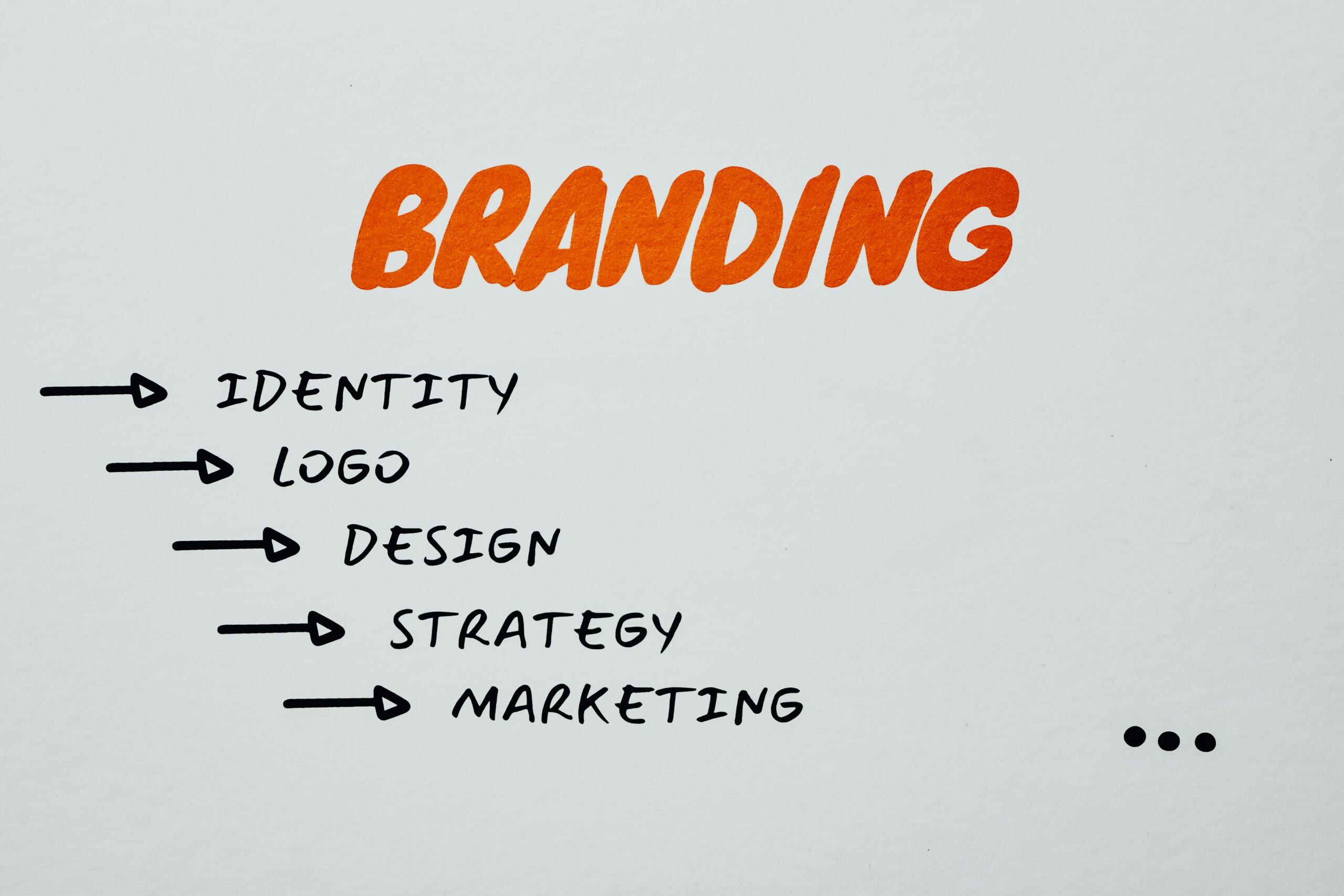Your all-in-one guide - everything to do with branding
You've probably heard the term branding before. This marketing concept accompanies us, albeit unconsciously, in our everyday lives. We are confronted with branding in the form of brands every day. Be it as brands, company designs, products that we use or services that we make use of. Branding describes the process of anchoring your brand in the minds of your target group and customers.
When talking about branding, the goal of companies is always the following: The brand is cultivated in such a way that it arouses emotions in its target customer group in order to create a bond with the product and the company.
Note: To get the most out of our blog post, it is helpful if you are already familiar with the following terms. If not, simply click on the relevant links to find out more in our glossary. We wish you much success and enjoyment with your training!
The most important terms
Branding is about presenting and positioning your brand in the best possible way. To better understand which tasks and goals need to be defined in branding, the following terms are important to start with:
Brand Image:
Translated from English, it means nothing other than your brand image. The question here is, what identity and associations do customers have with your brand?
Brand Identity:
Your brand identity should be carefully defined and selected. The brand identity reflects the values of your company and should definitely stand out from the competition.
Brand Awareness:
This refers to the level of awareness of your brand and shows how familiar customers are with your brand. It also serves very well as a benchmark for your market success.
Brand Strategy:
Everything that is part of your brand strategy, such as your positioning or your communication guidelines, falls under brand strategy.
Brand Equity:
This refers to the economic value of a brand. This includes positive customer experiences, brand awareness and brand image. As a rule, the higher the equity, the greater the competitive advantages and customer loyalty.
Branding vs. marketing
Now you're probably wondering whether branding isn't the same as marketing. In fact, the two have a lot in common, but fulfill different functions.
Put simply: branding positions your brand, whereas marketing is intended to find a market for it and thus generate sales. Marketing therefore involves taking specific measures to make the brand known to the desired target group. The aim here is to incentivize customers to buy your products or services and thereby generate sales. This includes, for example, online advertising, press work or internal sales measures.
Roughly speaking, marketing is used to generate buyers and branding is used to acquire loyal customers. Branding is therefore the basis of good marketing and plays a major role in marketing activities.
What types of branding are there?
The type of branding that is recommended for your company varies depending on the industry, defined goals and desired target group. There are many different types of branding and each type has its own characteristics. The following distinctions are made in branding:
| Term | Definition / Explanation |
| Product branding | A unique image is created for your products or articles to make them stand out from the competition. |
| Corporate branding | This is not about offering a specific product or an article but rather the branding of the entire company - for example, the development of the corporate identity. |
| Employer branding | This involves positioning a company as an attractive employer that attracts employees and retains existing employees. The target group here is therefore (potential) employees, not new customers. Products are also not addressed here. |
| Personal branding | The personal marketing (self-marketing) of an individual or entrepreneur. |
| Geographical branding | Used especially in tourism, where cities or regions become brands. |
| Co-branding | In co-branding, at least two brands work together to create a strong image. Usually associated with personal branding. |
| Digital Branding /Online Branding | Branding, which appears online and in public relations work in the digital media. To the For example, through email marketing or affiliate marketing or social media marketing. |
| Service branding | With this type is abouta unique image for the own service so that it stands out from the competition on the market. |
| Influencer branding | Now very widely used in social media. Brands use the influence and popularity of personalities or influencers to promote their products and differentiate their brand identity from competitors. |
Goals for branding
When using branding, you naturally ask yourself why all this effort is necessary and what it means. the company brings. What exactly is the goal of branding and can I achieve the same goals purely with marketing?
Branding and marketing go hand in hand and support each other. Without one, the other cannot function properly. It should be clearly emphasized here:
What emotions and feelings does your brand evoke in the customer? The customer must automatically Clear picture in front of your eyes when they think of your brand. This brand identity can emphasize your brand and create the desired Awakening the customer's emotions .
If you have established a clear branding strategy, the entire image of the company - i.e. the corporate identity - will be influenced in the long term and your customers will know what they are getting into.
Since branding naturally affects your products, your design and general brand image, your customer has a clear picture of the quality you deliver, and will therefore be able to identify with your brand.
Successful branding always appears immediately in the customer's mind.
Awaken feelings
Through a branding–strengthened brand can, as already mentioned, arouse certain feelings and emotions.
The customer who has already had a good experience with your product or service in the past and is therefore already familiar with its quality is more likely to remain loyal and to use it. again and again return. This is because branding allows you to improve your image. best possible to the desired target group and thus one of the goals desired through branding has been achieved.
Examples of successful branding
Good brand development is essential for success, as the customer already has a certain expectation of the brand. with regard to your brand has. Success can be perceived in different areas of the brand and usually starts with the design of the logo.
Companies take the first measures therefore also already with the logo and make sure that the design is adapted so that the customer has an immediate connection to the company - and that even if he only has the said Logo sees.
For example, Apple with the bitten-off apple in its simple design: This logo conveys high and exclusive quality. Lego, for example, is different with its yellow and red background. Here the company tries to, performed a Verbinding with fun and freedom and would like to build up being a child, creativity and fun in adults. wcorners.
Further examples of successfulm Branding:
- The unmistakable Coca-Cola bottle, which you can buy without any imprint or company name. by design alone immediately recognizable.
- IKEA has built the corporate branding so perfectly that it automatically stands for low prices and their self-assembly furniture and evokes a familiar feeling.
- Victorinox - the manufacturer of the world-famous Swiss Army Knives. When you think of pocket knives, the Victorinox brand immediately comes to mind. The knives are unmistakable in their red design and the endless possibilities that the knives have to offer.
- With the golden bunny and its chocolate master, the Swiss chocolate manufacturer Lindt has ensured that chocolate conveys a feeling of exclusivity and high quality. at the customers. Customers are quick to pick up Lindt products to give as a fine gift at celebrations.
Thanks to a good brand strategy, these brands have really managed to reach their respective target groups and establish an unmistakable brand identity.
Conclusion
Recognition value is the most important thing for any company if it wants to establish a clear brand identity. And that starts with the logo.
In order to stand out from the competitionyou have to build a unique image that runs like a red thread through the brand strategy. Through the right measuresn beThe effect is that every contact between customer and brand triggers certain emotions and messages.
And that is extremely important. Because The aim is always to stand out from the competitiont, retains existing customers and attracts new customers.
The branding process ensures that you build a strong brand and specifies exactly how you therebyst, to achieve exactly that. It is important that the development of the brand is consistent and stands out from the competition. differentiated. This is the only way to build a strong position in the market and contribute to long-term success.
A well thought-out brand strategy, brand identity and the right branding will also help you, for example, find new employees and retain existing employees. So you win on several levels at once.






